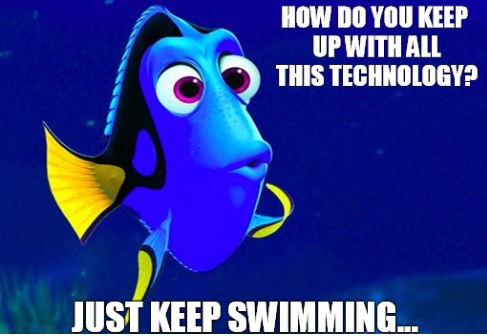The world is changing for our students in terms of their citizenship, relationships and the workplaces they will enter. In terms of citizenship, they are becoming “digital citizens” where they have a multitude of ways to exchange information, retrieve information, and perceive information. Relationships are made through connection with others in a common work place and give users a sense of their identity as their network evolves. Finally, in terms of the workplace, “basic digital operational and communication skills are required throughout most levels of the modern workforce and understanding how to create meaning and connect messages to people in the saturated media landscape is vital to any business endeavor” (The Media Spot, 2015).
The process in ensuring that our students are able to fit into all three categories is to begin by implementing media literacy in the K-12 classroom. Media literacy is not just a new subject to teach, but it is a new way in which we teach. In 2005, the Center for Media Literacy (CML) posed five questions that are intended to help teachers bring media literacy into their classrooms. These questions are used as guides to deepen discussions and conversations with their students. They are:
- Who created the question?
- What creative techniques are used to attract my attention?
- How might different people understand this message differently?
- What values, lifestyles and points of view are represented in, or omitted from, this message?
- Why is this message being sent?
(Share, Jolls & Thoman, 2007)
Along with these questions, the CML also has five core concepts to keep in mind when teaching through media literacy.
CML’s Five Core Concepts:
- All media messages are ‘constructed.’
- Media messages are constructed using a creative language with its own rules.
- Different people experience the same media message differently.
- Media have embedded values and points of view.
- Most media messages are organized to gain profit and/or power.
(Share, Jolls & Thoman, 2007)
When students are able to answer these questions and fully understand these concepts, then they are on their way to understanding how media is created, what their purposes are and how to use appropriate media messages so they can be heard. This is not something that happens in one year, five years, or even ten. It is an ever-evolving process that must start in the K-12 classrooms if we want our children to be ready for the competitive global workforce that is upon us right now. Empowering our students with the skills necessary to answer the CML’s core questions is where we must start.
References:
The Media Spot. (2015). Media literacy in the modern nyc k-12 school. The Media Spot. Retrieved from https://www.mindmeister.com/146904586/digital-media-literacy-in-nyc-k-12-schools-http-bit-ly-k12medialit#
Share, J., Jolls, T., & Thoman, E. (2007). Five key questions that can change the world. Center for Media Literacy. Retrieved from http://www.medialit.org/sites/default/files/02_5KQ_ClassroomGuide.pdf















